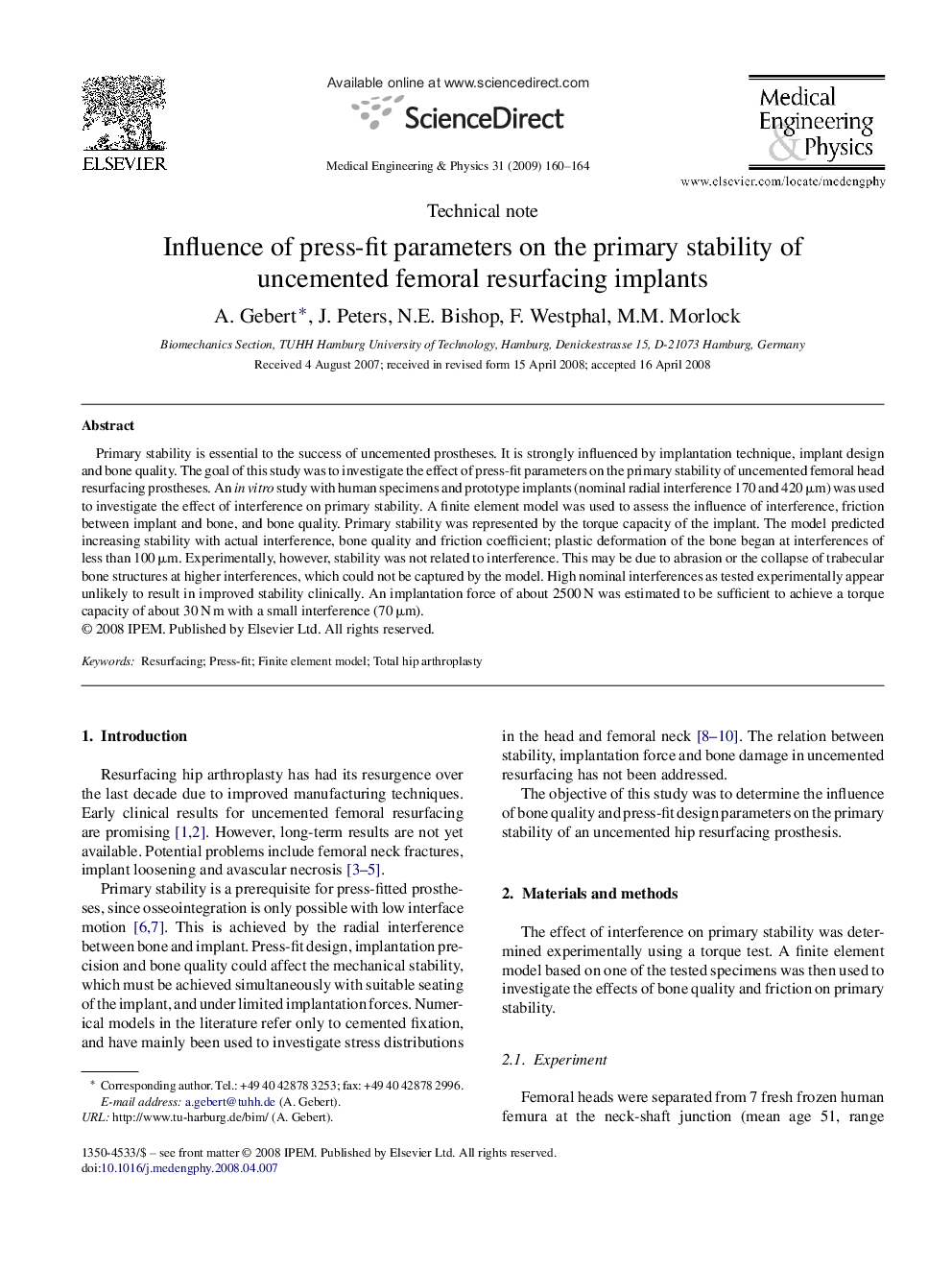| Article ID | Journal | Published Year | Pages | File Type |
|---|---|---|---|---|
| 876859 | Medical Engineering & Physics | 2009 | 5 Pages |
Primary stability is essential to the success of uncemented prostheses. It is strongly influenced by implantation technique, implant design and bone quality. The goal of this study was to investigate the effect of press-fit parameters on the primary stability of uncemented femoral head resurfacing prostheses. An in vitro study with human specimens and prototype implants (nominal radial interference 170 and 420 μm) was used to investigate the effect of interference on primary stability. A finite element model was used to assess the influence of interference, friction between implant and bone, and bone quality. Primary stability was represented by the torque capacity of the implant. The model predicted increasing stability with actual interference, bone quality and friction coefficient; plastic deformation of the bone began at interferences of less than 100 μm. Experimentally, however, stability was not related to interference. This may be due to abrasion or the collapse of trabecular bone structures at higher interferences, which could not be captured by the model. High nominal interferences as tested experimentally appear unlikely to result in improved stability clinically. An implantation force of about 2500 N was estimated to be sufficient to achieve a torque capacity of about 30 N m with a small interference (70 μm).
